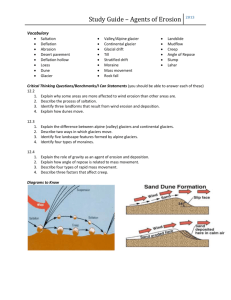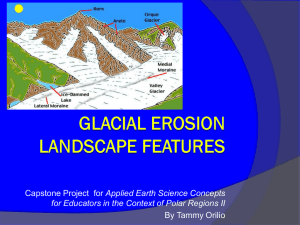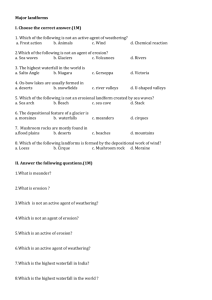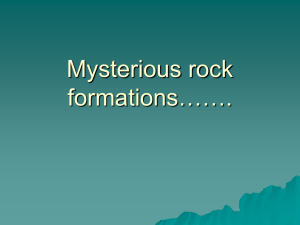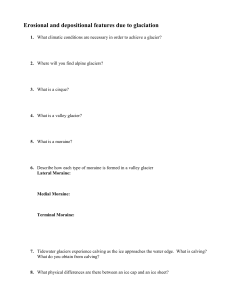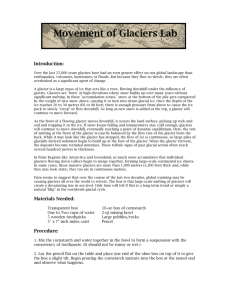Processes and Features of Erosion
advertisement
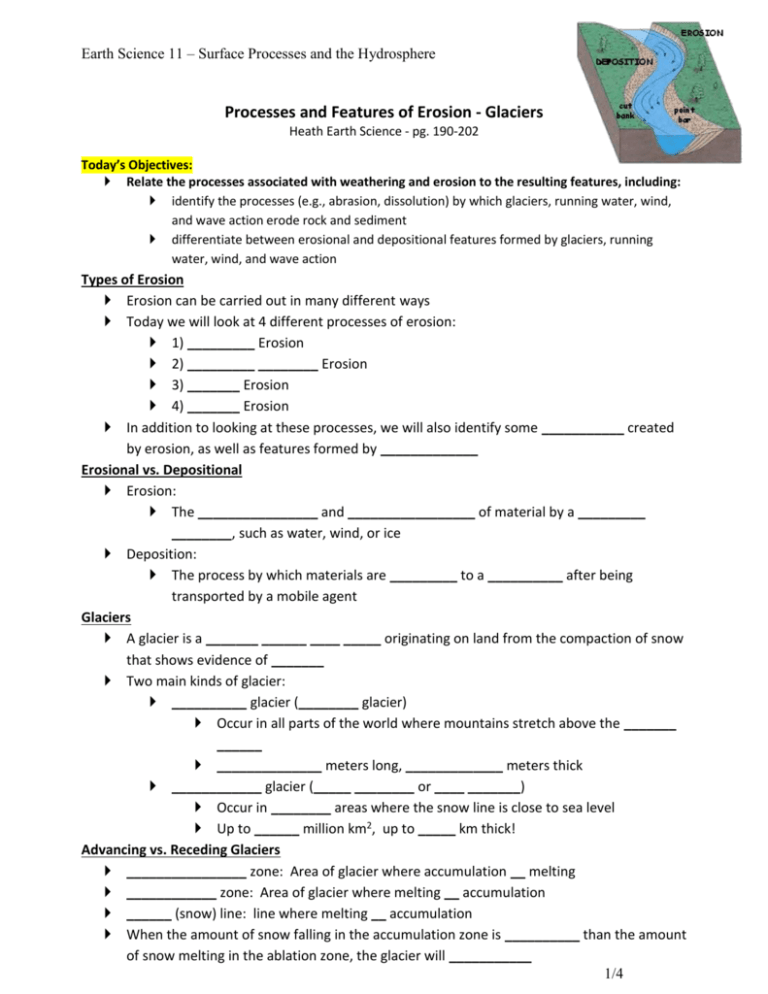
Earth Science 11 – Surface Processes and the Hydrosphere Processes and Features of Erosion - Glaciers Heath Earth Science - pg. 190-202 Today’s Objectives: Relate the processes associated with weathering and erosion to the resulting features, including: identify the processes (e.g., abrasion, dissolution) by which glaciers, running water, wind, and wave action erode rock and sediment differentiate between erosional and depositional features formed by glaciers, running water, wind, and wave action Types of Erosion Erosion can be carried out in many different ways Today we will look at 4 different processes of erosion: 1) _________ Erosion 2) _________ ________ Erosion 3) _______ Erosion 4) _______ Erosion In addition to looking at these processes, we will also identify some ___________ created by erosion, as well as features formed by _____________ Erosional vs. Depositional Erosion: The ________________ and _________________ of material by a _________ ________, such as water, wind, or ice Deposition: The process by which materials are _________ to a __________ after being transported by a mobile agent Glaciers A glacier is a _______ ______ ____ _____ originating on land from the compaction of snow that shows evidence of _______ Two main kinds of glacier: __________ glacier (________ glacier) Occur in all parts of the world where mountains stretch above the _______ ______ ______________ meters long, _____________ meters thick ____________ glacier (_____ ________ or ____ _______) Occur in ________ areas where the snow line is close to sea level Up to ______ million km2, up to _____ km thick! Advancing vs. Receding Glaciers ________________ zone: Area of glacier where accumulation __ melting ____________ zone: Area of glacier where melting __ accumulation ______ (snow) line: line where melting __ accumulation When the amount of snow falling in the accumulation zone is __________ than the amount of snow melting in the ablation zone, the glacier will ___________ 1/4 Earth Science 11 – Surface Processes and the Hydrosphere When the opposite is true, the glacier will _________ Advancing glaciers will create _____________ features Receding glaciers will create _________________ features Glacial Erosion – Abrasion Glaciers erode the bedrock largely by using pieces of ________ as cutting tools These pieces are ___________ over the bedrock by the forward movement of the glacier, in a process called ___________ The scratches left behind on the rocks are called _____________ Glacial Erosion – Plucking Another process of glacial erosion is ____________ Plucking occurs when ______ __________ beneath the glacier penetrates _________ in the bedrock, then ___________ to the rock (video) As the glacier moves __________, the rock is _________ from the ground Glacial Erosional Features You should be able to name and recognize the following erosional features, and how they are formed: 2/4 Earth Science 11 – Surface Processes and the Hydrosphere Glacial Erosional Features Glacial Deposition Once a glacier begins to __________, the material from ___________, __________, or ___ ______ of the glacier will be left behind This material will form many features called ______________ ____________ You should be able to name and recognize the following depositional features, and how they are formed: 3/4 Earth Science 11 – Surface Processes and the Hydrosphere Glacial Depositional Features Homework Complete the homework package that you are given! Due: Next class 4/4
